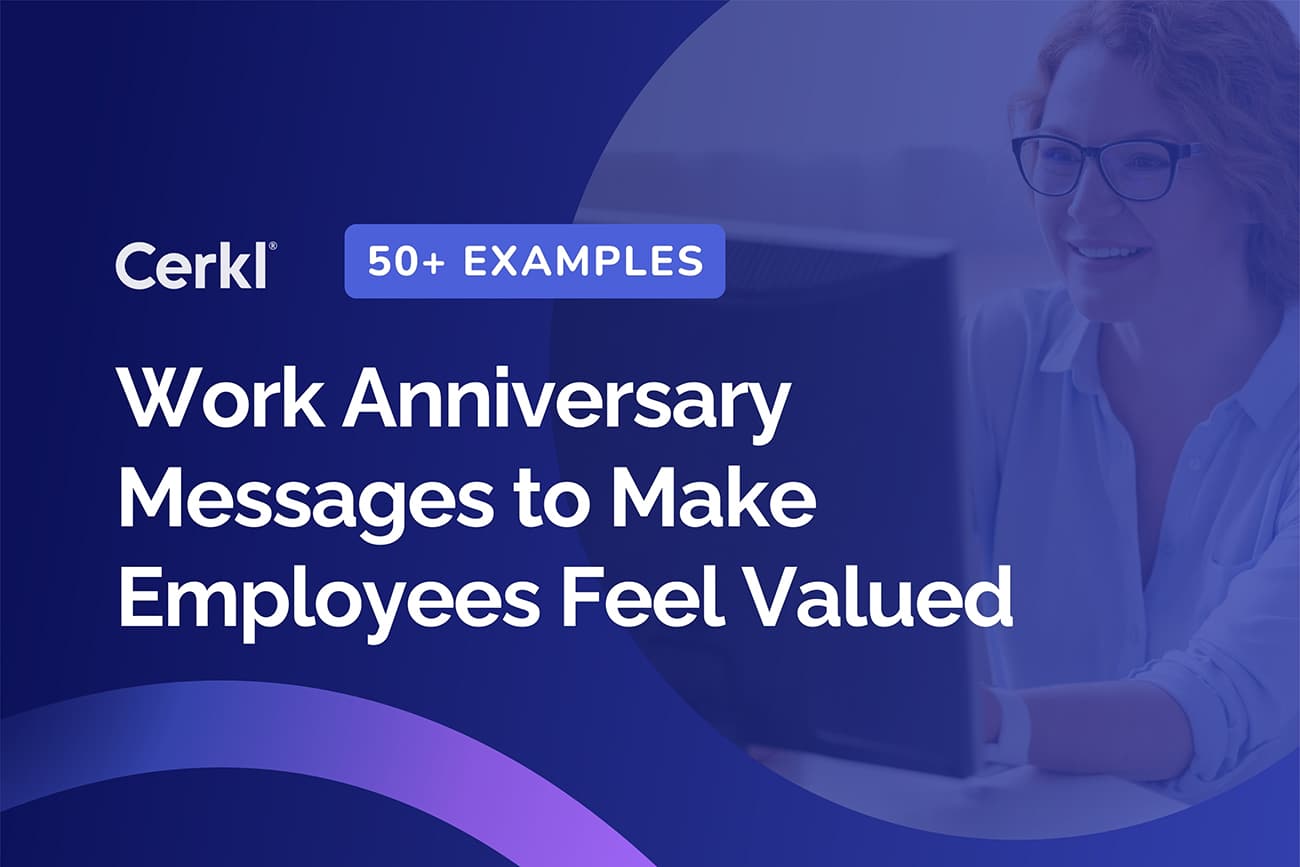 Employee Experience Best Practices
Employee Experience Best Practices
20 Up-to-Date Employee Experience Statistics You Can Use in 2025
Employee experience statistics provide a mine of information about employees and your ROI. We’ve handpicked 20 to help you improve your strategies. Use them.
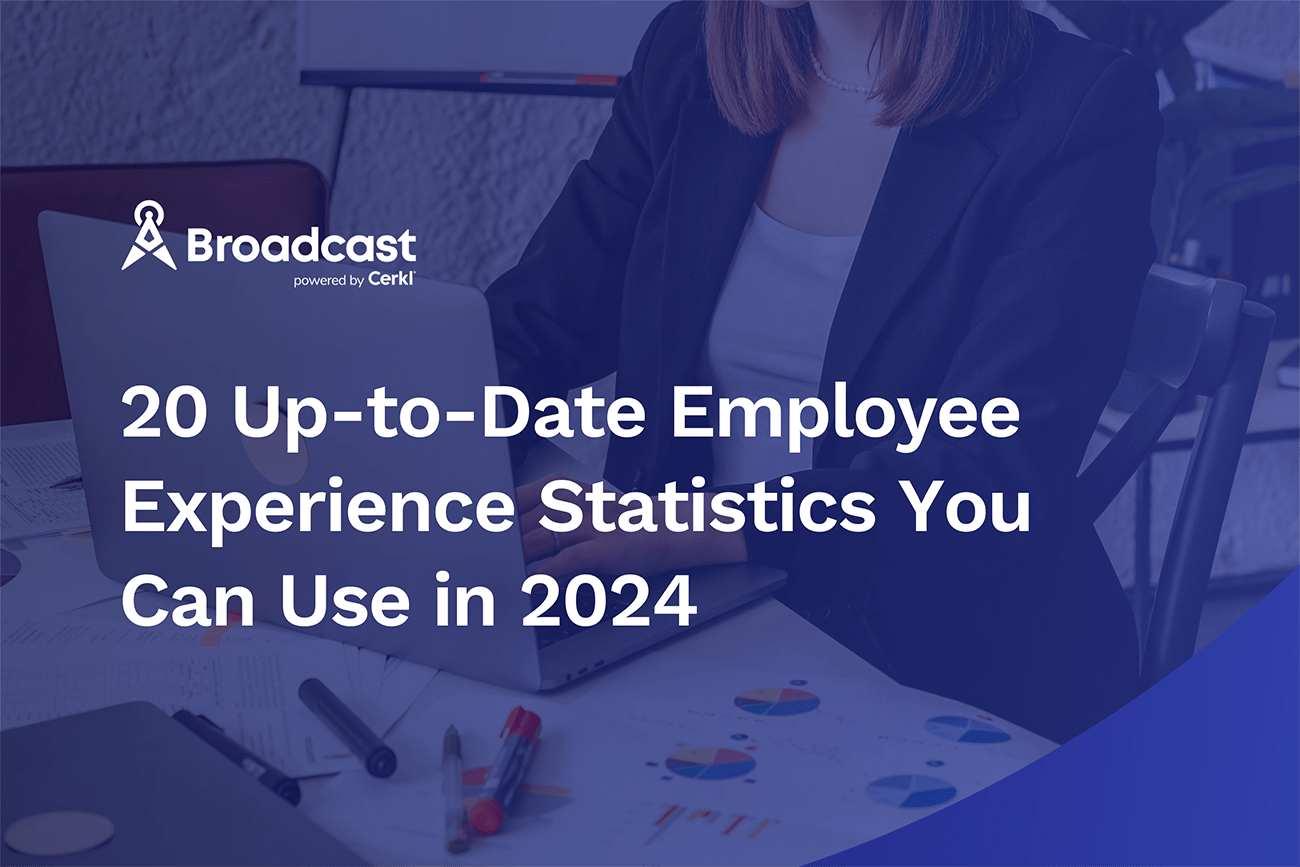
.webp)
Discover Internal Communications’ ROI
Measure the ROI of using modern internal communications. Get the template for free without any risk or commitment.
Access NowA positive employee experience (EX) means a lot. It starts the day a prospective employee signs up for a job and ends when they leave the company - sometimes long after they’ve left.
As Gallup states in How to Improve the Employee Experience, ”The employee experience is the journey an employee takes with your organization."
When employees have a good experience, they feel valued and respected. This leads to loyalty and a desire to stay with the company. A supportive and positive work environment helps prevent burnout, which is a major factor pushing employees to leave. A positive workforce experience also fosters a sense of purpose and motivation. Employees feel their work matters and are more invested in achieving goals. When employees feel trusted and empowered to make decisions, they're more engaged and more likely to take ownership of their work.
Ultimately, higher retention due to a positive experience leads to a more stable and experienced workforce. This, in turn, contributes to a smoother-running company and potentially an even better experience for new hires, further strengthening employee engagement and retention. It becomes a virtuous cycle.
There’s a lot that organizations can and need to do to improve EX. But how will statistics help them?
In this post, we’re going to share 20 interesting employee experience statistics that will help you improve the employee experience at your organization. We will also suggest how you can use statistics to improve employee experience and employee engagement.
Where Do These Employee Experience Statistics Come From?
For the record, we make sure our data is fresh and trustworthy by getting it directly from dependable sources. We’re serious about keeping our data accurate. We don’t use middlemen. We go right to original sources including surveys, case studies, and research reports. This way, you can trust that the information we provide is the real deal.
Our stats are current (2023 and 2025) - and, if they aren’t, we tell you why we have used them. Don’t accept other sources that deliver data that is presented as being up-to-date, but is in fact five or ten years old.
Free ROI Calculator to Measure Comms Impact
Quantify the financial benefits of your internal communications
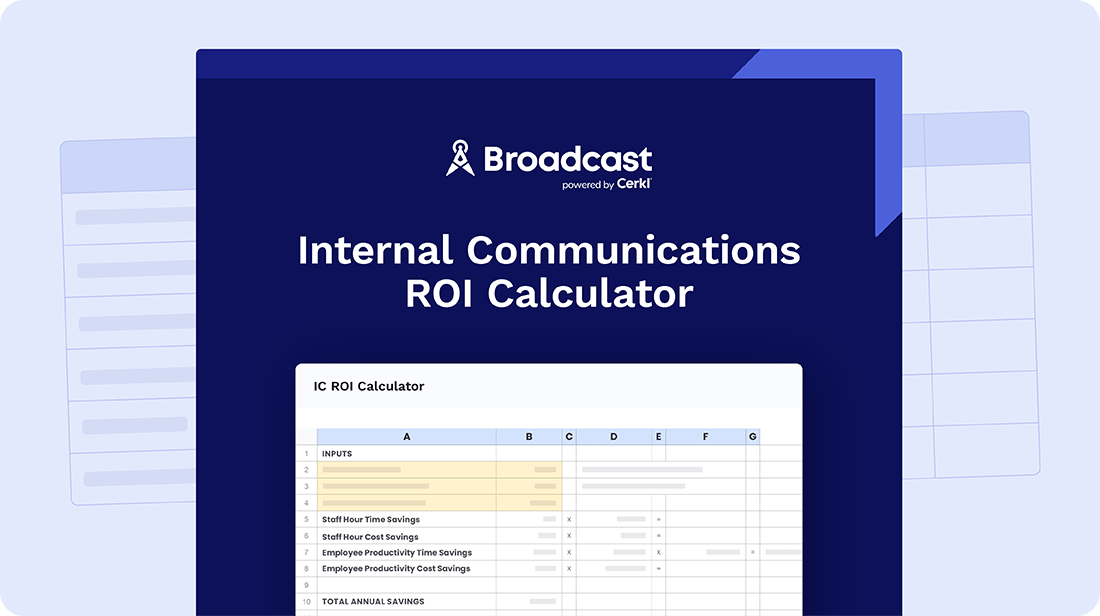
Download Free
20 Employee Experience Statistics For You to Use
We have drawn these employee experience statistics from a variety of different sources to cater to all needs and interests. Some are positive while others are negative.
#1 Allow Employees to Share Work Emails If They Will
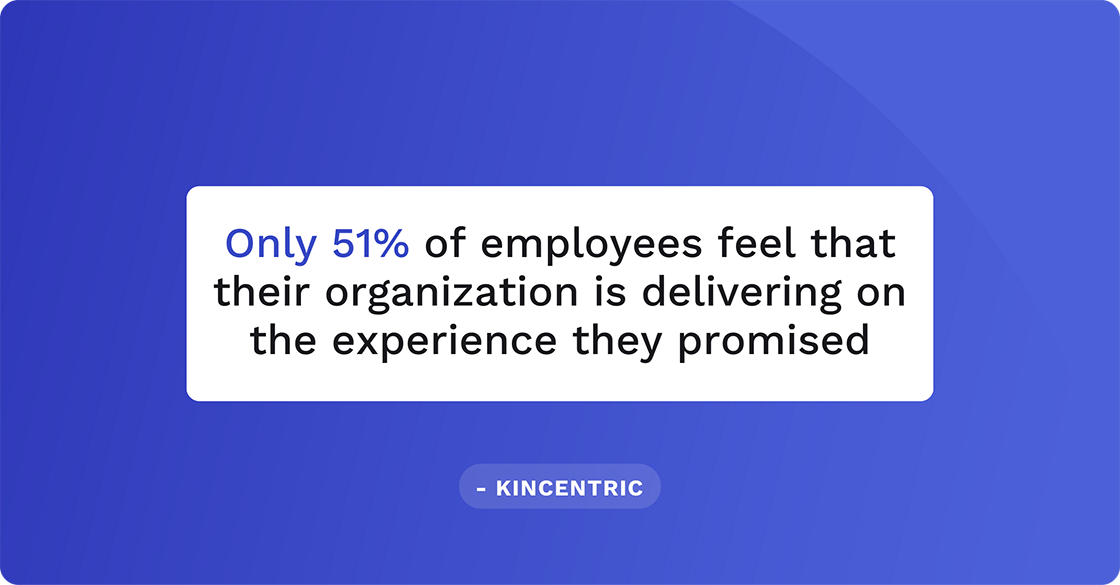
"70% of employees say they are comfortable with their organization using their emails to improve employee experiences." Qualtrics
The Qualtrics 2024 Employee Experience Trends Report identifies five quite surprising trends that they say are reshaping the world of work in 2024. One of these is that nearly three-quarters of employees are comfortable letting employers read their private work communications channels, especially email. The proviso is — “if it means helping shape a better employee experience.” Of these, 80% are engaged employees and 56% are neutral.
However, they are all more ambivalent about social media, with only 41% of them wanting employers to see their social media data.
#2 Don’t Fall Short on EX Demands

"Only 51% feel that their organization is delivering on the experience they promised." Kincentric
People want to feel understood and cared for by their leaders and aligned with their organizations in a meaningful way. Yet many organizations are falling short in meeting these demands.
Kincentric’s Global Employee Experience Trends 2023 is all about translating employee experience into business outcomes. It states that while employee engagement “still matters,” organizations need to “find new ways to move forward and create meaningful change to drive it.” More importantly, they highlight the finding that just over half of the respondents to their employee experience trends survey don’t feel that their organizations are delivering on the EX they were promised.
They provide opportunities and challenges throughout the report. The opportunity here is that employee engagement is 5.5 times higher when employee experience is aligned with strategy and culture.
#3 Document Employee Value Proposition to Improve EX

"Only 31% of employees say their employee value proposition (EVP) is documented. Less than 50% fully understand the EVP offered." Gallagher
A primary aim of Gallagher’s State of the Sector 2023/24 survey was to improve the effectiveness of internal communication and ultimately improve the employee experience. But, says Chris Andrew, consultant lead of Communication Consulting Practice for Gallagher in the UK, less than a third of the survey respondents said their EVP is documented.
An important part of the employee experience, he says EVP “is shorthand for the deal — what employees get and what’s expected of them.” It relates to everything to do with experience including behavioral norms, culture, pay and benefits, development opportunities, and ways of working. He assesses that while communicators help employees understand values, behaviors, and culture, less than half properly understand benefits, rewards, and compensation.
Free ROI Calculator to Measure Comms Impact
Quantify the financial benefits of your internal communications

Download Free
#4 Don’t Prioritize Customer Experience Over Employee Experience

"More than 61% of C-suite executives believe that good EX will lead to good CX. And 58% say providing good EX is a company and personal priority. But 88% of employees are encouraged to prioritize CX. " Salesforce
The Experience Advantage from Salesforce is all about transforming customer and employee experience for the future of work. In it, they state that the C-suite recognizes the link between EX, CX, and revenue, but still prioritizes CX. These executives acknowledge that good EX equals good CX and that good EX is a priority. But, nearly nine out of ten C-suite members admit that all employees are encouraged “to focus on the customers’ needs above all else.”
#5 Ensure a Better CX to Ensure a Better EX

“90% of employees say the experience they have as an employee directly impacts the experience they provide customers.” isolved
The isolved 2023-2024 Voice of the Workforce report contains seven keys to a better employee experience, including supporting development to enhance employee engagement. It also discusses what to do when putting a plan together to improve EX.
Because almost all employees relate EX with CX, their take is that offering competitive salaries, guaranteeing payroll accuracy, encouraging professional growth, and equipping staff with self-service technologies will probably improve recruitment and retention as well as the financial performance of organizations.
#6 Recognize That Personalization Increases Employee Satisfaction

“87% of EX professionals believe that personalization increases employee satisfaction.” Zendesk
The Zendesk Employee Experience Trends Report 2023 identifies four major trends. The first of these is that “EX is moving from back office to center stage.” Another is that “personalized support boosts employee productivity and satisfaction.”
EX professionals agree overwhelmingly on the value of personalized experience. Additionally, 71% of professionals believe that their organizations have a clear plan for advancing their personalization capabilities for employee experience. However, only 59% of EX teams deliver personalized employee communications at the moment.
Nevertheless, 23% state they are planning to expand or add personalization capabilities in the next year.
#7 Create a Culture of Belonging for Employees
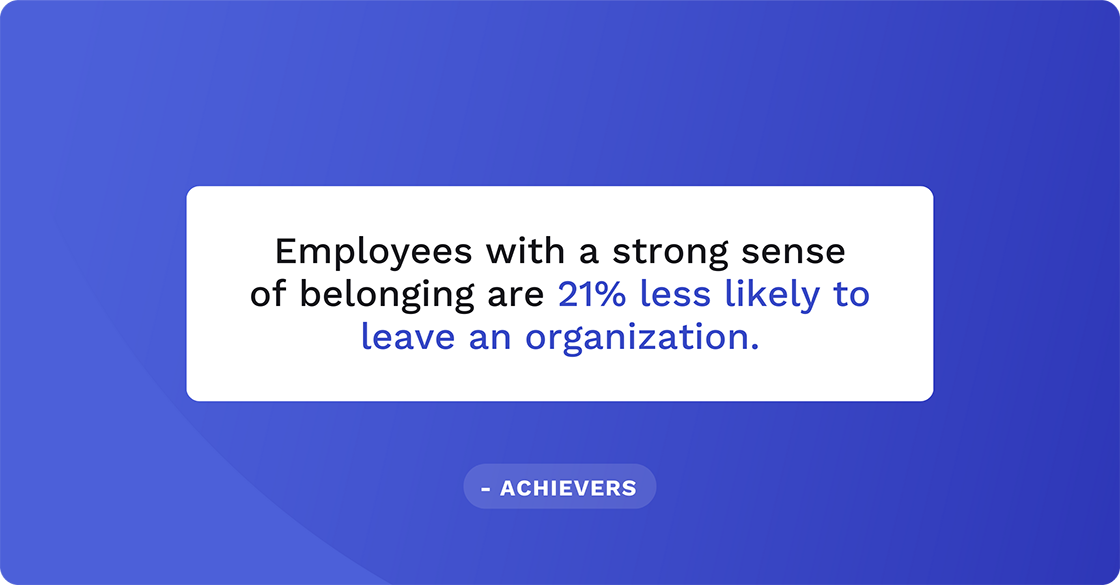
“Employees with a strong sense of belonging are 21% less likely to leave an organization.” Achievers
The Achievers Workforce Institute 2023 Engagement and Retention Report states that employees want flexibility, but they also want “a deeply engaging” work experience. Feeling like they truly belong is a core benefit for both employees and the organization. Furthermore, “a strong sense of belonging is the best predictor of employee engagement, enthusiasm, commitment, and productivity.”
Interestingly, the report also states that those with a hybrid work style have lower employee engagement than those working on-site. Their retention rates are also lower.
By focusing on belonging as the ultimate measure of success, leadership can align all efforts towards a common goal. This fosters a united people strategy with clear manager actions, ultimately creating a cohesive and engaging experience for employees.
#8 Seize an Untapped Opportunity to Boost Your Bottom Line

“Opportunity: A consistent EX results in 2x higher ratings of financial performance. Challenge: Only 42% of employees globally have a consistent EX.” Kincentric
Kincentric’s Global Employee Experience Trends 2023 report mentioned earlier also talks about new approaches, new possibilities, and a new powerful business impact. It asks, “How are new realities and evolving employee expectations impacting the employee experience?”
Their research points to a very real need for change. Ultimately, employee engagement comes from experiences that employees can trust. The more consistent the experience, the more this experience can also translate into higher business performance.
#9 Leverage the Connection Between EX, CX, and Revenue

“A shift in employee experience would result in a 45% increase in profits per person-hour, from $41 to $59.” Salesforce
The Experience Advantage from Salesforce, also mentioned earlier, connects employee and financial data and establishes a clear link between employee experience and revenue.
It shows that hourly sales rose with increasing employee tenure, cross-departmental experience, increased skillset diversity, and a full-time schedule. It also shows that a strong employee experience directly impacts sales. Stores with top-performing employee experience generate $87 per person-hour worked, compared to just $57 for those in the bottom quartile.
Tiffani Bova, former Chief Growth Evangelist at Salesforce points out that the link between happy employees, happy customers, and revenue isn’t new. But, she says, “ Employees are now the most important stakeholder to long-term success and expect the same level of ease and convenience in the experience as customers do.
“Employee experience is table stakes for the future of work, and new data shows that a unified customer and employee experience is a winning growth strategy that can increase revenue by up to 50%.”
Tiffani Bova
#10 Meet the High Digital Expectations of Younger Employees
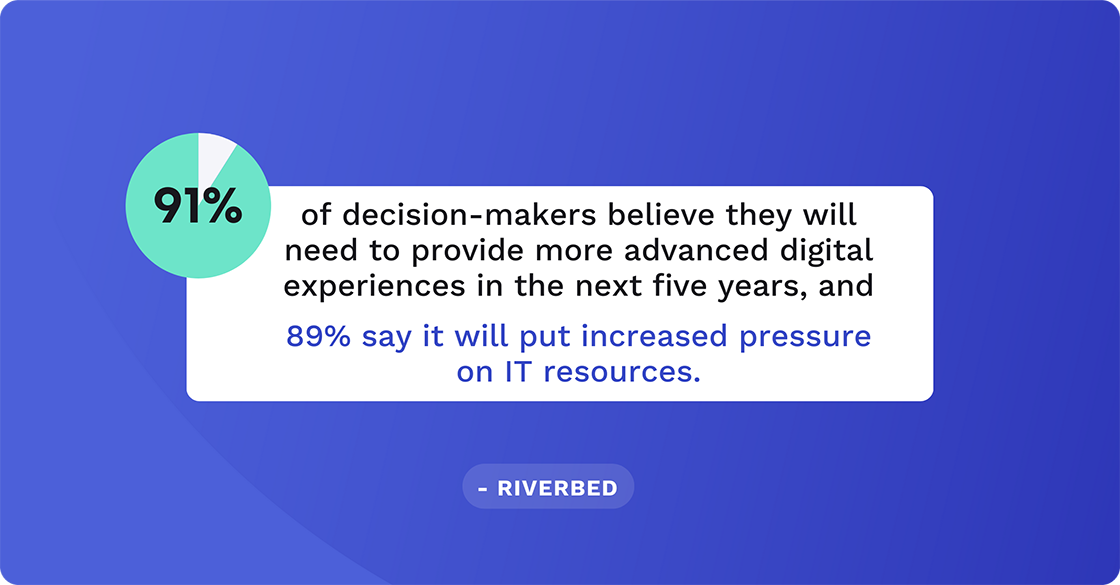
“91% of decision-makers believe they will need to provide more advanced digital experiences in the next five years, and 89% say it will put increased pressure on IT resources.” Riverbed
Riverbed’s Global Digital Employee Experience (DEX) Survey 2023 identifies the many challenges organizations have in delivering an outstanding DEX. It points out that DEX is critical to employee retention, improving employee engagement, boosting employee productivity, and growing a business. But budget constraints, talent shortages, inadequate tools to observe, the lack of appropriate cloud services and software apps, and too much data all add to the challenge.
Above all else, companies need to meet the high expectations of younger workers, who make up about half of the workforce. The report states that today, a seamless digital experience is a top (49%) office “perk.” Already Millennials (29%) and Gen Z (28%) are most demanding of IT’s time, compared to Generation X (19%) and Baby Boomers (9%).
#11 Prioritize Employee Experience
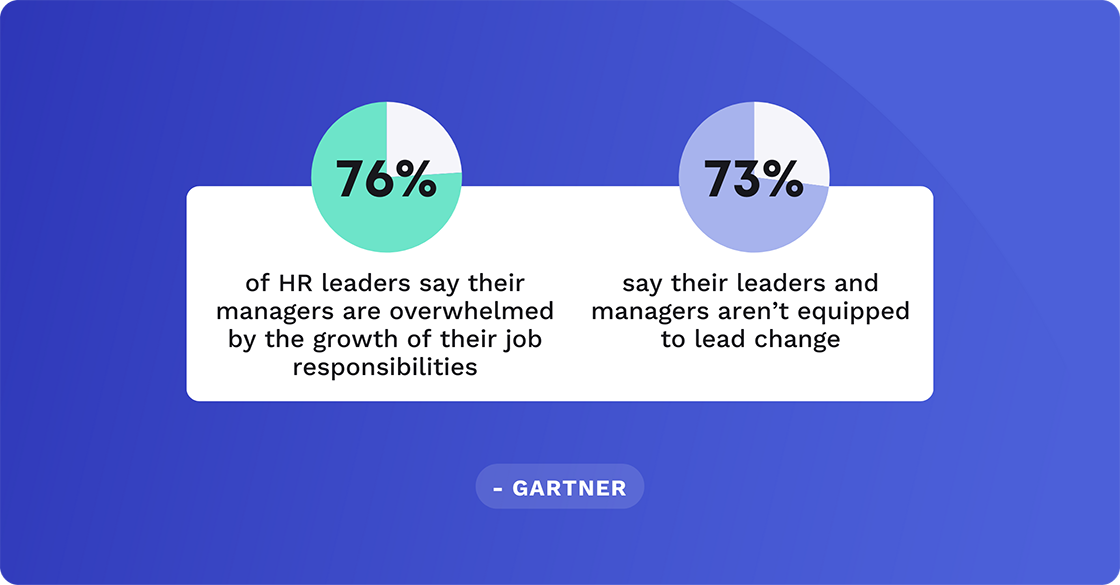
“76% of HR leaders say their managers are overwhelmed by the growth of their job responsibilities. And 73% say their leaders and managers aren’t equipped to lead change.” Gartner
“Employee experience takes center stage for HR as many elements of the employee-employer relationship turn rocky,” says Jordan Turner, Content Marketing and Strategy at Gartner. In an article, Where HR Will Focus in 2024, he maintains that HR leaders are taking action to rebuild trust and employee engagement as the organization adjusts to new work norms.
However, managers are struggling to handle 51% more responsibilities than they can manage. Furthermore, 41% of HR leaders say employee engagement and connection to company culture is compromised by hybrid work. At the same time, only about 50% of employees say they trust their organizations.
He quotes Peter Aykens, Chief of Research, HR Practice at Gartner: “The road to a new model of work, leadership and employee engagement has been a bumpy one. In 2024, HR will combat an unsettled employee-employer relationship and will face pressures and opportunities to transform HR’s performance through technology.”
#12 Improve EX Metrics This Way

"Employee engagement drops to 60% when employees work in the office every day. It is highest (77%) when they are in the office three days a week, and 71% when they work remotely." Qualtrics
The Qualtrics 2024 Employee Experience Trends Report mentioned earlier shows that employees who work five days in an office or an on-site location have the lowest EX metrics. Conversely, those who work a hybrid schedule have the highest EX indices overall. When they don’t spend any time in the office, the KPI score is somewhere in between.
These stats, adapted from the Qualtrics report, tell the whole story.

It seems that as much as they value it, employees don’t want to fully immerse themselves in remote work. For new employees especially, a fully remote work arrangement limits their interaction with colleagues and supervisors and may lead to a sense of detachment from the team - especially if they rarely (or never) see them.
#13 Upgrade Hardware and Software Options to Increase Retention
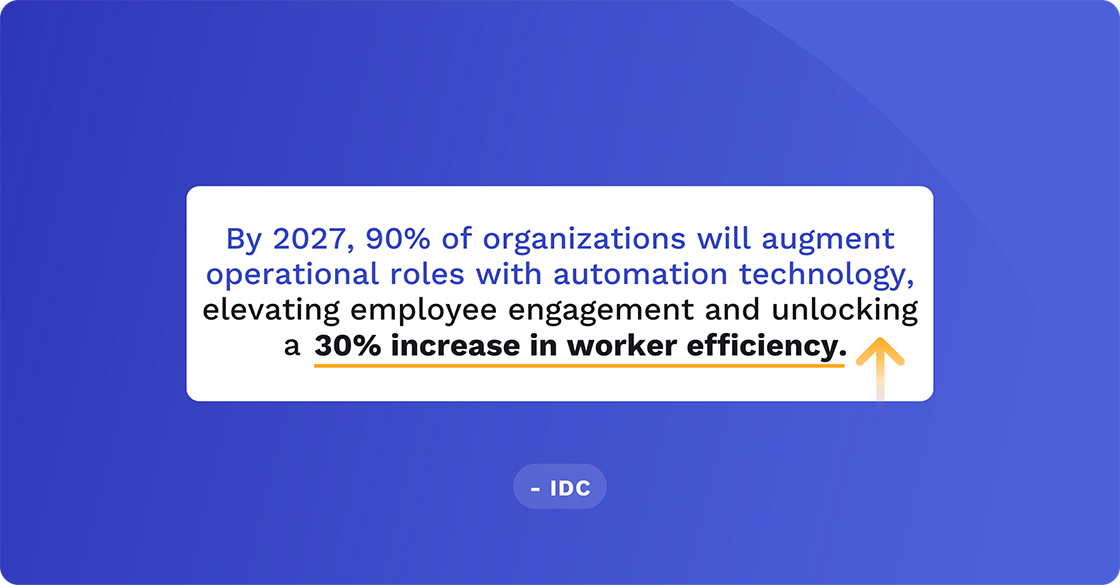
“By 2027, 90% of organizations will augment operational roles with automation technology, elevating employee engagement and unlocking a 30% increase in worker efficiency. ” IDC
IDC FutureScape Prediction 2024 predicts everything from the future of connectedness and operations to the future of work. The aim is to help business leaders better align IT initiatives with business goals. We dipped into their predictions and have highlighted just a couple.
IDC’s top prediction for the future of operations is quoted above. This will, of course, require additional security of data as well as upskilling and training of the workforce.
Their top prediction for the future of work is that 60% of the Forbes Global 2000 (G2000) companies will upgrade hardware and software technologies to increase worker retention with personalized work experiences and 60% enhanced collaboration by 2025. Another prediction is that by 2027, 40% of current job roles will be redefined or eliminated across G2000 organizations accelerated by the adoption of GenAI.
Technologies can provide personalized and experiential activities that speed up and help support ongoing productivity. However, a downside of rapid technological development and adoption has been that organizations can't keep pace with employing workers that have sufficiently current or deep skills - both at a technical and human level. Therefore, managing highly distributed teams doing complex, interdependent tasks isn’t easy. However, the promise of automation, particularly the ability of AI and GenAI tools to facilitate repetitive tasks like coding, data entry, research, and content creation can amplify the effectiveness of learning in the flow of work. It’s a great solution!
#14 Improve and Prioritize Onboarding Experiences
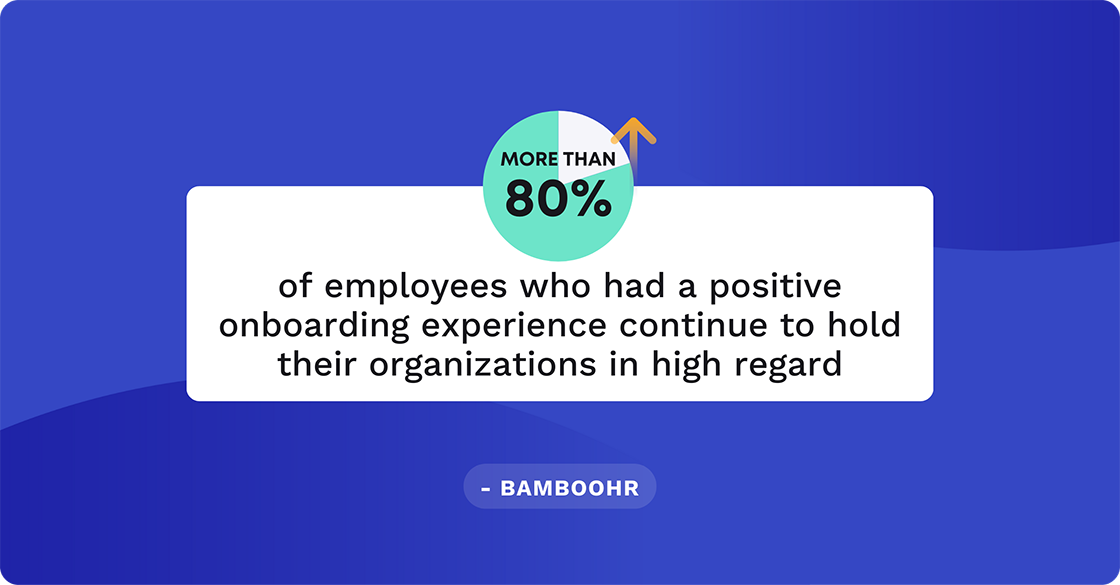
“More than 80% of employees who had a positive onboarding experience continue to hold their organizations in high regard.” BambooHR
BambooHR’s How to Make Employee Onboarding a Top Priority in 2023 emphasizes the importance of positive onboarding experiences. When they surveyed employees about their onboarding experiences, they discovered that new hires who had positive experiences were three times more likely to develop a strong commitment to their organization.
This is, of course, a critical element of the employee experience that starts when employees literally come onboard.
The BambooHR report details four phases of onboarding: Setting expectations during recruitment, orientation, training, and ongoing support. It warns that organizations skipping any of these steps risk lower productivity from new hires and higher turnover.
#15 Improve Your Employee Exit Program
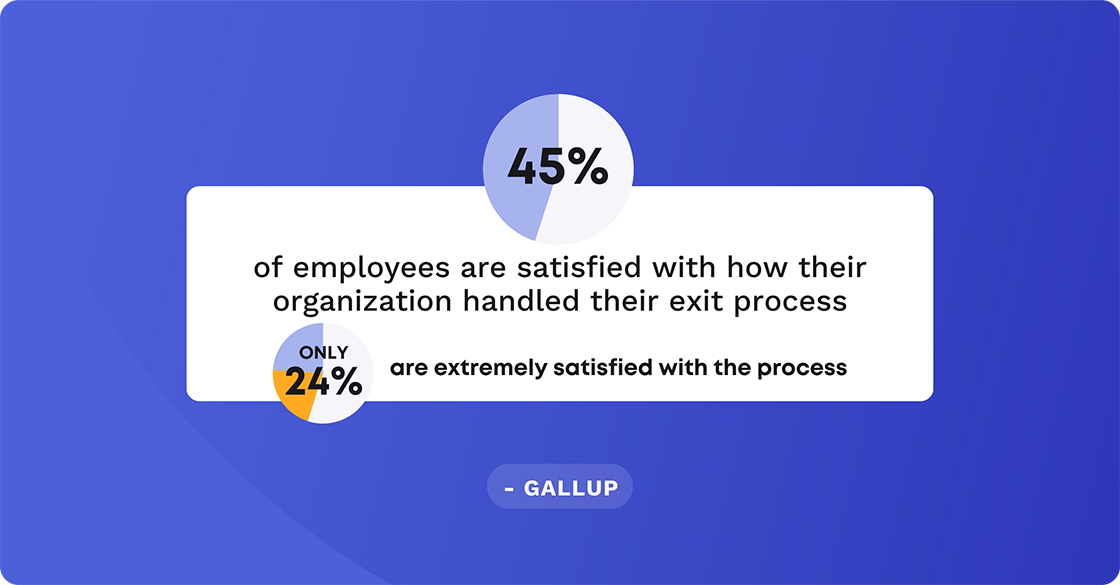
“Less than half of employees (45%) are satisfied with how their organization handled their exit process, and only 24% are extremely satisfied with the process.” Gallup
As Gallup points out in How to Improve the Employee Experience (see above), a well-designed exit program goes beyond just processing departures. What you need is a comprehensive exit program that can trace where your employees are going and why they are leaving. By combining exit surveys, interviews, and performance data, you can gain valuable insights into the employee lifecycle. This allows you to identify potential problem areas that contribute to turnover, along with the factors that predict employee departures.
#16 Encourage Prioritization of Employee Experience Spending
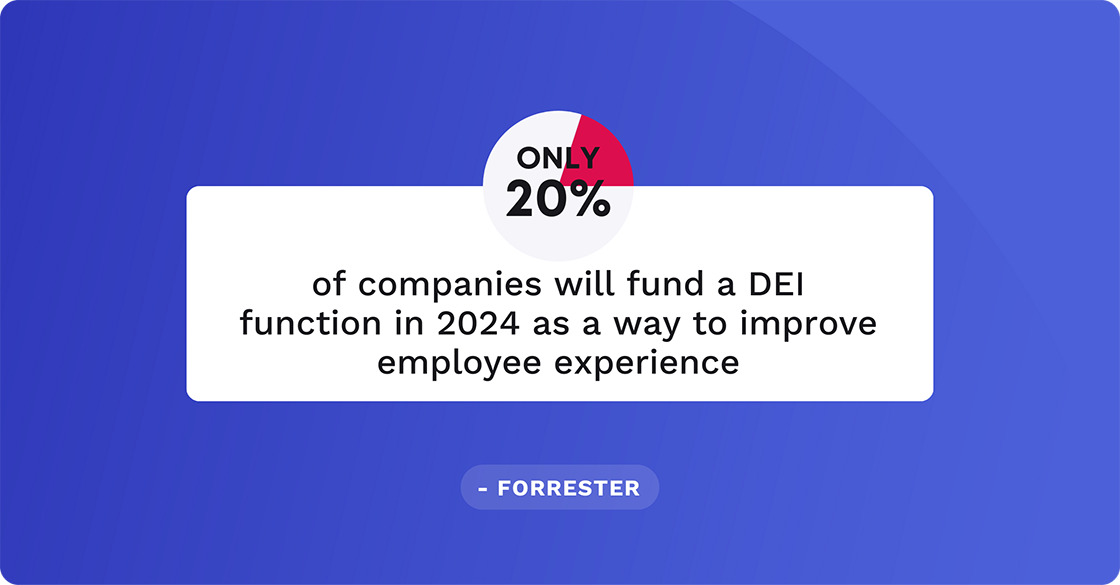
"Only 20% of companies will fund a DEI function in 2024 as a way to improve employee experience." Forrester
Forrester’s Predictions 2024 warns companies to expect an “EX winter” that will “freeze employee experience investments.” They state that in 2024, many teams that drive employee experience will suffer from a lack of funding or focus. For example, the percentage of companies willing to fund diversity, equity, and inclusion (DEI) functions with an endorsed strategy and personnel dropped from 33% in 2022 to 27% in 2023. And they predict that the number will fall a further 20% by the end of 2024.
Furthermore, they predict that while 66% of technology decision-makers who work in software say that they will invest in EX/human capital management software during 2024, those investments won’t be used to their full advantage. Also, many companies will prioritize spending that makes HR functions efficient rather than spend money that improves EX outcomes.
This, they say, “will create an opportunity for companies that consciously choose to zig toward EX while so many others are zagging away from it.”
#17 Prioritize the Digital Employee Experience

“59% of knowledge workers say their organization doesn’t have a dedicated Employee Experience Manager or don’t know if such a role exists in their company.” Scalable
The message in the 2024 Scalable Software Digital Employee Experience (DEX) Report is that “employers are failing to prioritize employee experience.” However, they believe that when more organizations start to recognize the importance of the employee digital experience on their satisfaction and success, this will probably change.
Issues are that a poor digital experience has an impact on employee retention. Additionally, hybrid working has made it much easier for employees to switch jobs. This is a theme we have highlighted elsewhere in this post!
#18 Increase the Number of Workplace Experience Professionals You Employ

“Organizations with a persistent cross-functional team tasked with workplace experience strategy will be 80% more likely to have high employee satisfaction with the workplace.” HqO
The HqO 2023 edition of The State of Workplace Experience states that a growing number of corporate real estate leaders are creating and building workplace experience teams. That’s because an increasing number of industry leaders recognize the financial benefits (for instance, decreased turnover costs, higher employee productivity, and improved net operating income) that come with an improved workplace experience.
#19 Ensure Jobs Are Personally Fulfilling
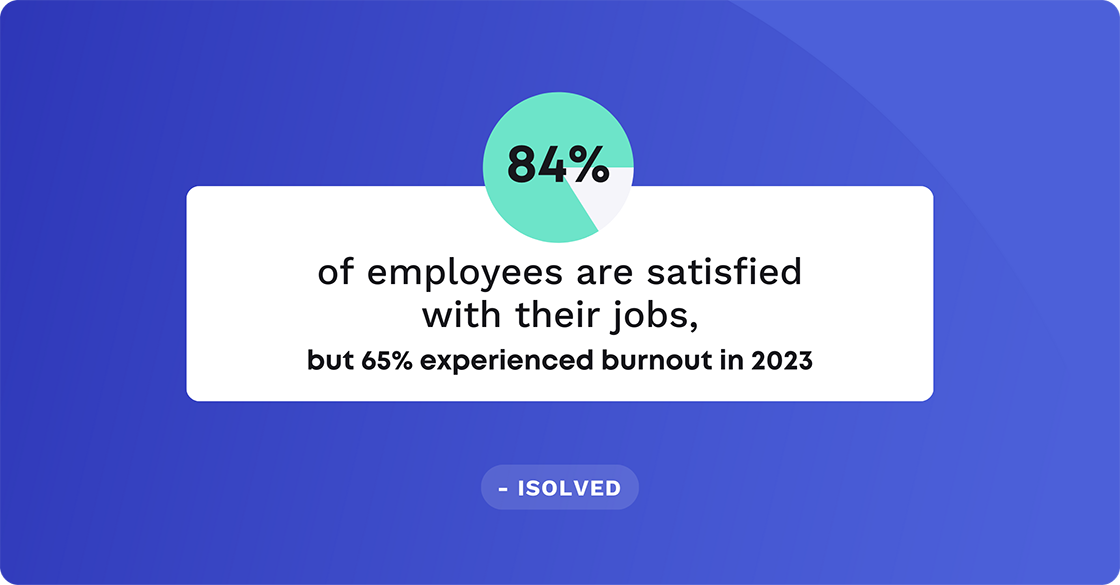
"84% of employees are satisfied with their jobs, but 65% experienced burnout in 2023." isolved
Isolved’s Uncovering the Significant HR Trends of 2024 to Maximize Your Next-Best Step survey found that 88% of employees say it’s important to have a job that is personally fulfilling. In 2022, that number was 78%, which shows this is growing in importance. While the 65% burnout figure seems high, the interesting factor is that it has decreased substantially over the past couple of years. The 2022 report shows that 75% suffered burnout, while the 2023 report shows this figure dropped to 69%. Hopefully, it will continue to go downwards.
An important factor relates to productivity implications with 72% of employees saying it impacted their performance during 2023.
#20 Don’t Ignore the Effects of Mental Health on Employee Experience

“99% of employees said EX affects their productivity. 100% said EX affects their mood. Over 98% said EX affects their personal life.” Akumina
Last, but certainly not least, the Akumina 2024 State of the Digital Workplace & Modern Intranet Report shares dozens of statistics, many of which relate directly to EX. Their 2023 survey, on which this report is based, focused on “the digital workplace evolution and how employees’ wants and needs have changed in the course of just one year.”
The effects that mental health has on EX is, the report states, one of the most challenging, yet important obstacles employers have to break through to retain and engage a productive workforce. The message from employees is loud and clear. More than half (54.8%) of survey respondents said they had or were considering leaving their jobs for a company that cares more about their mental health and overall wellbeing.
Another major challenge this report highlights, is what several others we have quoted highlight too. There is a need to level the playing field and equalize customer experience and employee experience. A major gripe is that nearly 60% of employees reported that their organizations publish CX surveys but not internal EX surveys. We know how important feedback is, and Akumina hits the nail on the head. “How can we really know what our users want and need if we don’t ask?”
Why do Statistics Matter for Employee Experience
Employee experience statistics are a powerful tool for any organization looking to create a more positive and productive work environment.
- Numbers can reveal trends and patterns that might otherwise go unnoticed. Employee experience surveys can highlight areas of dissatisfaction or disengagement that managers might not be aware of.
- Statistics allow you to track progress over time. By benchmarking your EX metrics against industry standards or your historical data, you can see if your efforts to improve employee experience and employee engagement are paying off.
- Data helps prioritize areas for improvement. Statistics can pinpoint which aspects of EX are most important to address first, allowing you to allocate resources effectively.
- Statistics can be a powerful tool for persuasion. By using data to quantify the impact of a poor employee experience (for instance, high turnover costs or decreased productivity), you can build a stronger case for investing in EX initiatives.
- When implementing EX initiatives, statistics can help measure their return on investment (ROI). By tracking metrics like retention rates and productivity after implementing changes, you can assess the effectiveness of your efforts.
Nigel Dias, managing director of 3n Strategy and chair of the HR Analytics Think Tank, talks about connecting the key performance indicators (KPIs) in the context of the employee experience in Building the agile future, a 2023 Workplace Learning Report published by LinkedIn.
“The rise of the employee experience and people analytics has refocused HR, reminding us that the output of HR activities are not numerous unconnected KPIs but a connected experience with individual employees at the center. By using HR data to answer cross-functional questions (such as about the impact of L&D on performance or talent), different functions can align, collaborate, and even magnify each other’s impact.” Nigel Dias
What’s Next?
Cerkl Broadcast can help you improve internal communications and employee engagement. This is, after all, what a good employee experience depends upon. Our internal comms software is suitable for any growing or large organization, irrespective of structure. It serves as a centralized hub ensuring that HR and internal communicators can easily access and manage information and make planning more effective.
We’d love to tell you more about Broadcast. But first we’d like you to look at your own statistics to measure the level of success you have with employee experience and employee engagement. It’s important to measure your comms. If you don’t normally do this, here’s an invitation to try our ROI calculator that will enable you to calculate your internal comms return on investment. It’s going to be an eye-opener either way - regardless of whether it shows a positive or negative result.
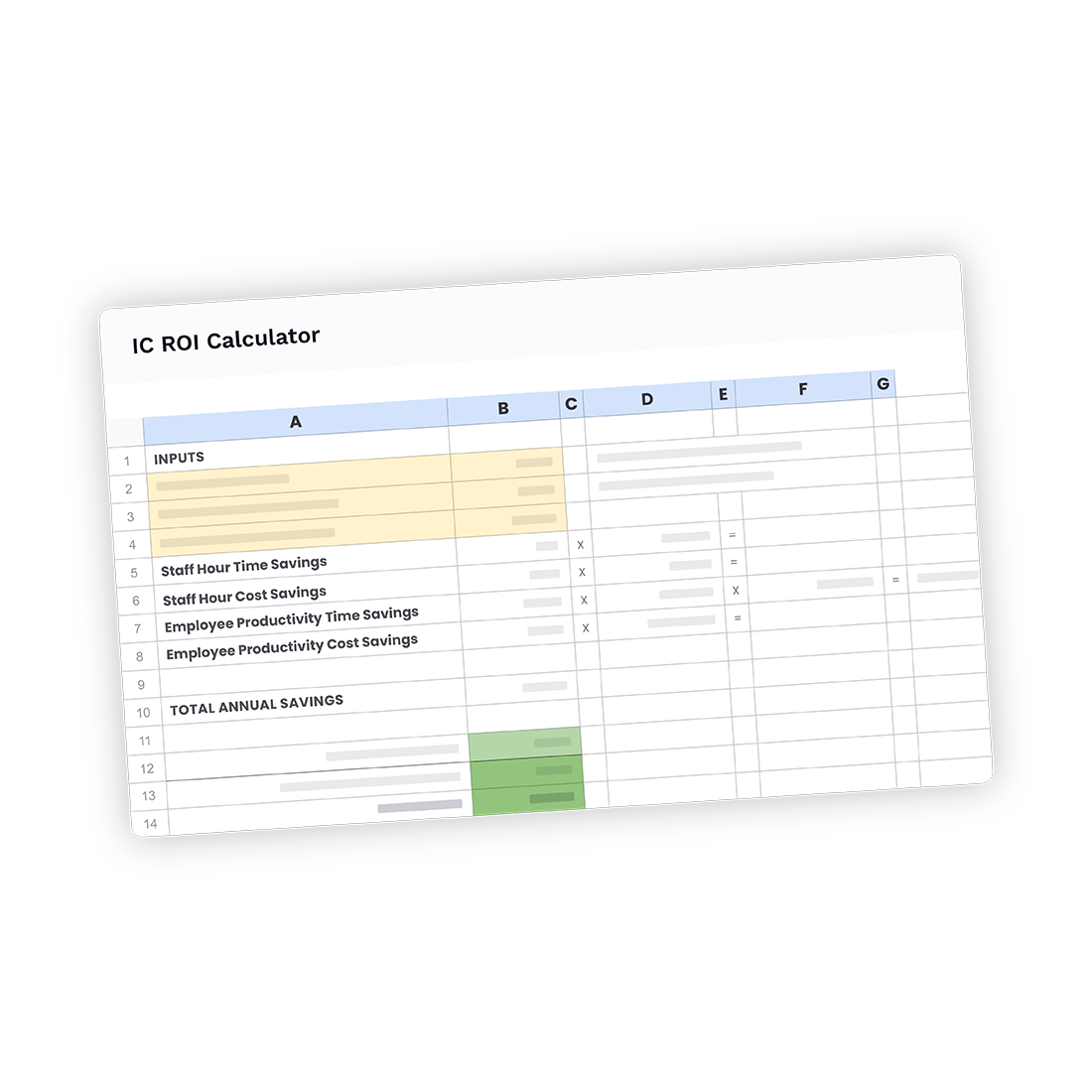
Free ROI Calculator to Measure Comms Impact
Quantify the financial benefits of your internal communications
Download Free
FAQ
Why are employee experience statistics important? Employee experience statistics are important because they reveal trends in employee satisfaction, employee engagement, and productivity. This allows companies to identify areas for improvement and track the effectiveness of their employee experience initiatives.
How is employee experience measured? Employee experience is measured via a variety of methods, including surveys, focus groups, exit interviews, and by tracking employee performance data. These methods provide both quantitative and qualitative insights into how employees feel about their work environment.
What is the ROI of employee experience? The ROI of employee experience can be significant. Studies show that companies with positive employee experiences have lower turnover rates, higher productivity, and improved customer satisfaction. This translates to a stronger financial bottom line.







